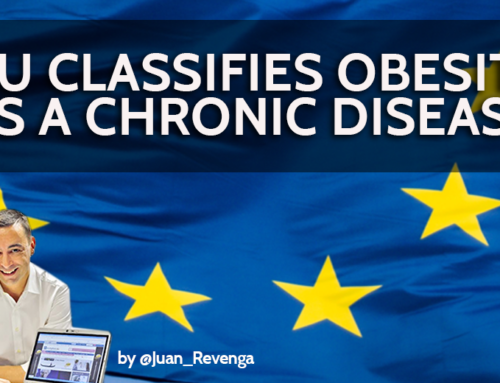From obesity to type 2 diabetes and vice versa
Under Tackling Obesity Together slogan, the seventh edition of the European Obesity Day will take place this coming May 20th. It brings people together to raise awareness and increase knowledge about obesity.
According to the Organization for Economic Co-operation and Development (OECD) data, more than half the adult population in the European Union is overweight or obese. And nothing indicates that this trend is changing, rather the opposite. The data provided to the World Health Organization continue to confirm this upward trend with figures that produce chills.
- Since 1980, obesity has more than doubled worldwide.
- By 2014, 39% of adults aged 18 and over were overweight, and 13% were obese.

Overweight and obesity are defined as abnormal or excessive fat accumulation that may impair health. Body mass index (BMI) is a simple index of weight-for-height that is commonly used to classify overweight and obesity in adults. It is defined as a person’s weight in kilograms divided by the square of his height in meters (kg/m2). For adults, World Health Organization (WHO) defines overweight is a BMI greater than or equal to 25 and obesity as BMI greater than or equal to 30.
The progression of alarming figures at the global level of both type 2 diabetes and obesity let us speak of pandemics. There are over 400 million adults who are obese worldwide, and according to WHO in 2025 will be more than 700 million.
As for diabetes, WHO itself confirms that there are now more than 346 million people affected worldwide. At this rate of growth, this figure is expected to double by 2030. And what is the relationship between these two pathologies? There is a resounding fact that unites them inexorably: 80% of type 2 diabetes appear after an increase in weight.
Pandemics of type 2 diabetes and obesity follow a similar, and scandalous, progression. Type 2 diabetes and obesity are among the most prevalent diseases in our population. Evidence shows that both can be preventable and treatable. We should not delay further action to prevent, treat and combat them.
Patia DIabetes
Latest posts by Patia DIabetes (see all)
- From gestational diabetes to type 2 - 10 November, 2020
- COVID-19 & Diabetes: the dangerous interaction of two pandemics - 24 June, 2020
- New Covid-19 features in DIABETESprevent app - 7 April, 2020









